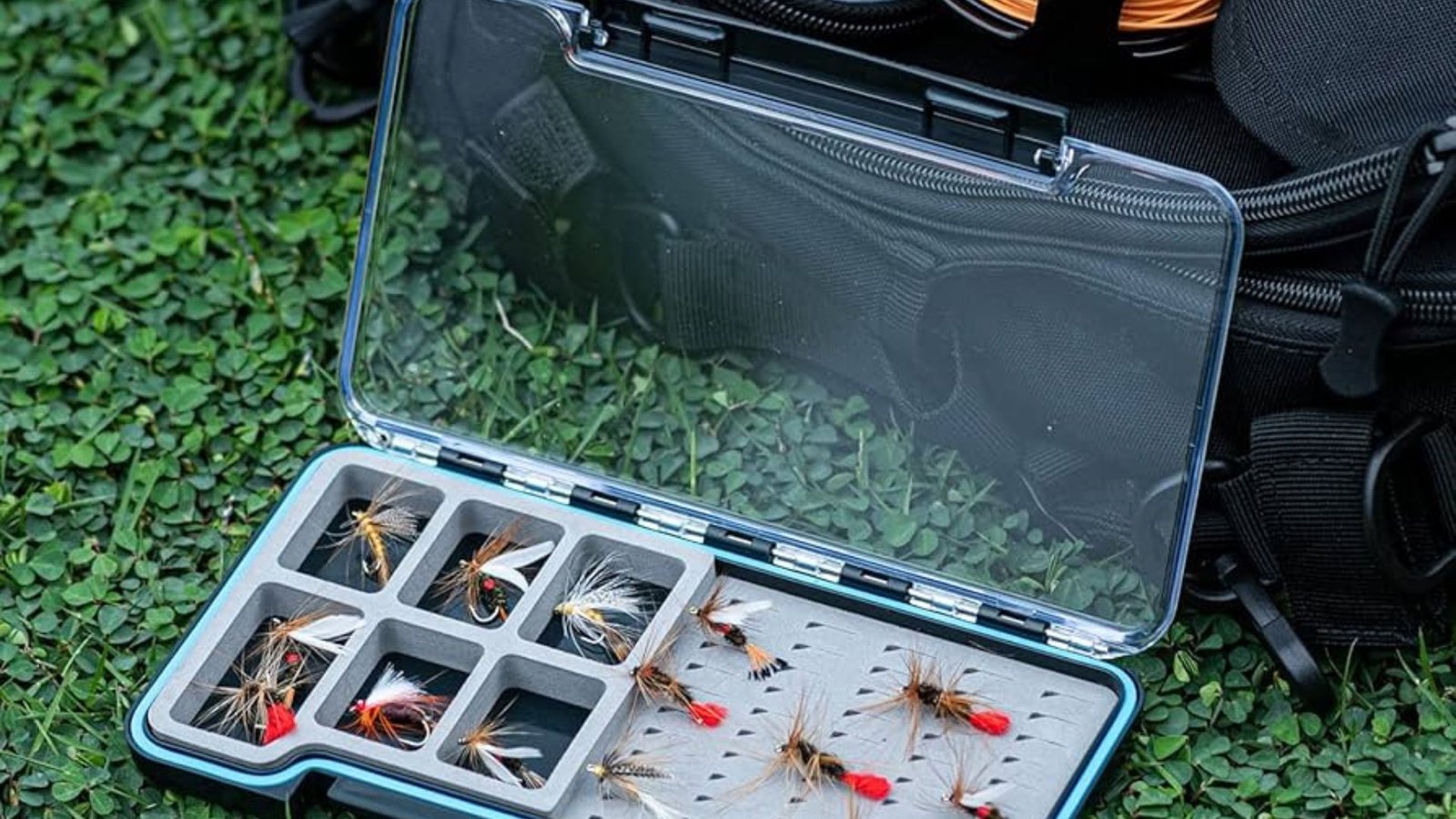Storing and preserving salmon flies ensures they remain in good condition and are ready for use whenever you hit the water. Proper storage techniques also help extend the lifespan of your flies, saving you time and money in the long run.

Ways to Store and Preserve Your Salmon Flies
1. Use Fly Boxes
- Waterproof Fly Boxes: Invest in waterproof fly boxes to protect your flies from moisture, which can cause rust and damage to the hooks.
- Compartmentalization: Choose boxes with compartments to organize flies by size, type, and color for easy access and identification.
2. Dry Flies Completely
- Air Drying: After each fishing trip, allow your flies to dry completely. Moisture trapped in flies can lead to mold and deterioration.
- Use Fly Patch: Attach a fly patch to your vest or pack to temporarily store wet flies while fishing. This prevents waterlogged flies from ruining others in your box.
3. Avoid Extreme Temperatures
- Temperature Control: Store your fly boxes in a cool, dry place away from direct sunlight and extreme temperatures. Heat can warp materials, while cold can make them brittle.
- Car Storage: During transportation, avoid leaving your flies in a hot car. Carry them with you or use insulated coolers to maintain a stable temperature.
4. Organize by Season and Location
- Seasonal Rotation: Rotate your flies based on the fishing season and anticipated hatches. This ensures you have the right patterns ready when needed.
- Location-Based Organization: Organize flies by the fishing location and type of water (e.g., rivers, lakes, streams) to match local insect hatches and fish preferences.
5. Inspect Regularly
- Check for Damage: Periodically inspect your flies for damage, such as bent hooks, worn materials, or loose threads. Replace or repair flies as needed to maintain effectiveness.
- Hook Maintenance: Sharpen hooks regularly using a fine-grit hook hone to ensure they penetrate fish mouths easily and securely.
6. Use Desiccants
- Silica Gel Packs: Place silica gel packs or desiccants in your fly boxes to absorb excess moisture and prevent rust on hooks.
- Dry Fly Powder: Apply dry fly powder to keep your flies buoyant and dry while fishing, especially in humid conditions.
7. Store with Care
- Avoid Overcrowding: Don’t overcrowd your fly boxes. Leave enough space between flies to prevent them from tangling or damaging each other.
- Separate Wet and Dry Flies: Use separate boxes for wet and dry flies to prevent moisture transfer and ensure dry flies remain buoyant.
8. Label and Record
- Label Boxes: Label fly boxes with contents and fishing details (e.g., location, date) to track fly usage and effectiveness over time.
- Fly Fishing Journal: Keep a fly fishing journal to record successful patterns, fishing conditions, and adjustments made to flies for future reference.
Conclusion
Properly storing and preserving your salmon flies is essential for maintaining their quality and effectiveness. By using waterproof fly boxes, drying flies thoroughly, avoiding extreme temperatures, organizing by season and location, inspecting regularly, using desiccants, storing with care, and labeling boxes, you can ensure your flies are ready for action whenever you are. Implement these storage tips to extend the lifespan of your flies and enhance your fishing experiences on the water.
In conclusion, effective storage and preservation techniques not only protect your investment in quality salmon flies but also contribute to successful fishing trips by ensuring you have the right flies in optimal condition. With these strategies, you can enjoy more productive and enjoyable salmon fly fishing outings throughout the seasons.




